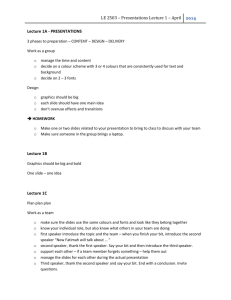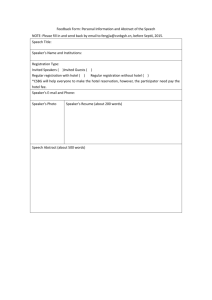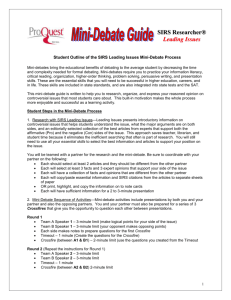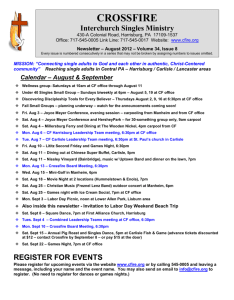The student guide The Mini-Debate Format 1. Two speakers for
advertisement
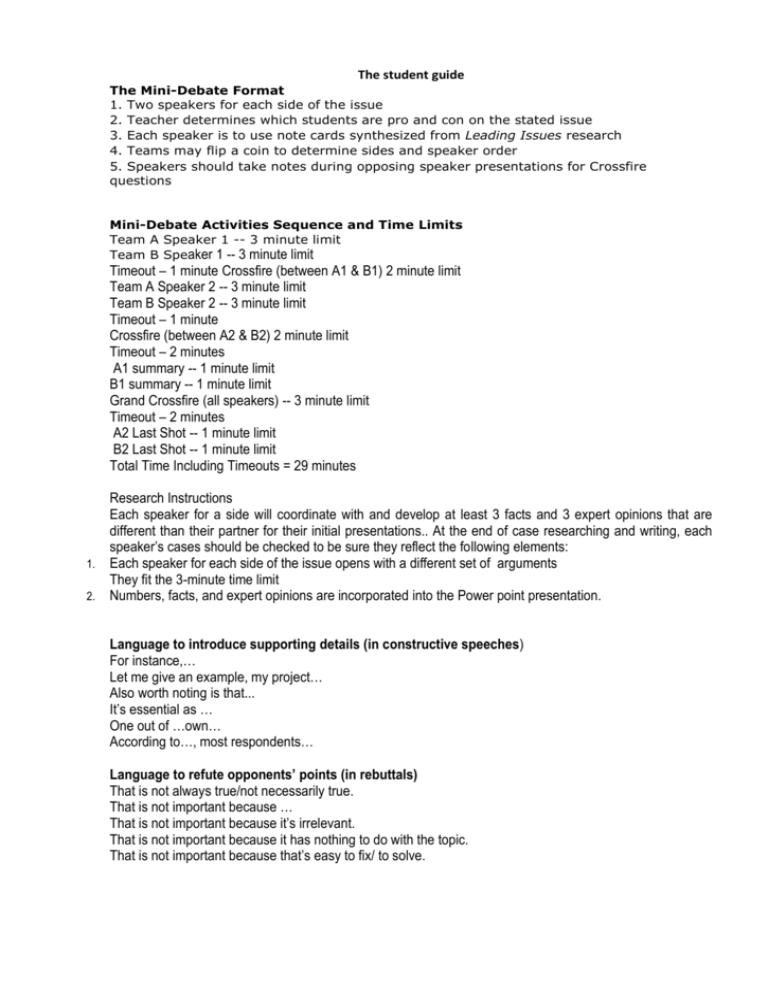
The student guide The Mini-Debate Format 1. Two speakers for each side of the issue 2. Teacher determines which students are pro and con on the stated issue 3. Each speaker is to use note cards synthesized from Leading Issues research 4. Teams may flip a coin to determine sides and speaker order 5. Speakers should take notes during opposing speaker presentations for Crossfire questions Mini-Debate Activities Sequence and Time Limits Team A Speaker 1 -- 3 minute limit Team B Speaker 1 -- 3 minute limit Timeout – 1 minute Crossfire (between A1 & B1) 2 minute limit Team A Speaker 2 -- 3 minute limit Team B Speaker 2 -- 3 minute limit Timeout – 1 minute Crossfire (between A2 & B2) 2 minute limit Timeout – 2 minutes A1 summary -- 1 minute limit B1 summary -- 1 minute limit Grand Crossfire (all speakers) -- 3 minute limit Timeout – 2 minutes A2 Last Shot -- 1 minute limit B2 Last Shot -- 1 minute limit Total Time Including Timeouts = 29 minutes Research Instructions Each speaker for a side will coordinate with and develop at least 3 facts and 3 expert opinions that are different than their partner for their initial presentations.. At the end of case researching and writing, each speaker’s cases should be checked to be sure they reflect the following elements: 1. Each speaker for each side of the issue opens with a different set of arguments They fit the 3-minute time limit 2. Numbers, facts, and expert opinions are incorporated into the Power point presentation. Language to introduce supporting details (in constructive speeches) For instance,… Let me give an example, my project… Also worth noting is that... It’s essential as … One out of …own… According to…, most respondents… Language to refute opponents’ points (in rebuttals) That is not always true/not necessarily true. That is not important because … That is not important because it’s irrelevant. That is not important because it has nothing to do with the topic. That is not important because that’s easy to fix/ to solve.



